https://www.youtube.com/watch?v=po4cHn4lmw0
How to Grow Raspberries, Blueberries, and Blackberries in Containers
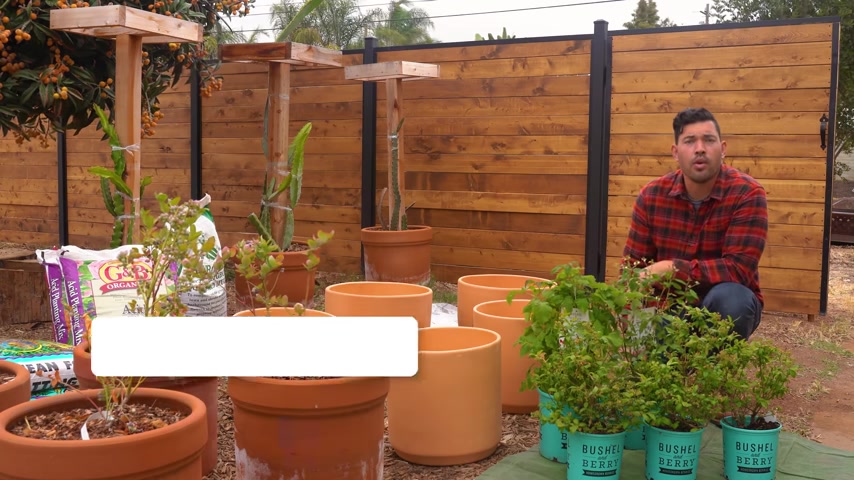
I used to think that because I lived in a small garden space , maybe even in a warm climate that I couldn't grow beautiful blueberries , blackberries and raspberries .
And in this video , I'm going to show you why .
That is not true Kevin Spirit here from Epic Gardening .
What's my goal to help you grow a greener thumb ?
So what I have here is I've got actually some established blueberries and we've talked about blueberries before here on the Epic Gardening channel , but I haven't talked about raspberries or blackberries before in containers .
So in this video , we're going to take these beautiful varieties from bushel and Berry who are the sponsors of the video .
We're going to pop them up .
We'll talk about soil lighting , any sort of tips I have for growing them in containers .
So cultivate that like button for beautiful bountiful blackberries and blueberries and raspberries .
And let's get into the video .
Let's talk about raspberries first , then blackberries , then blueberries , raspberries and blackberries grow in much the same way .
Although there are some important distinctions .
So let's just imagine this is our raspberry plant .
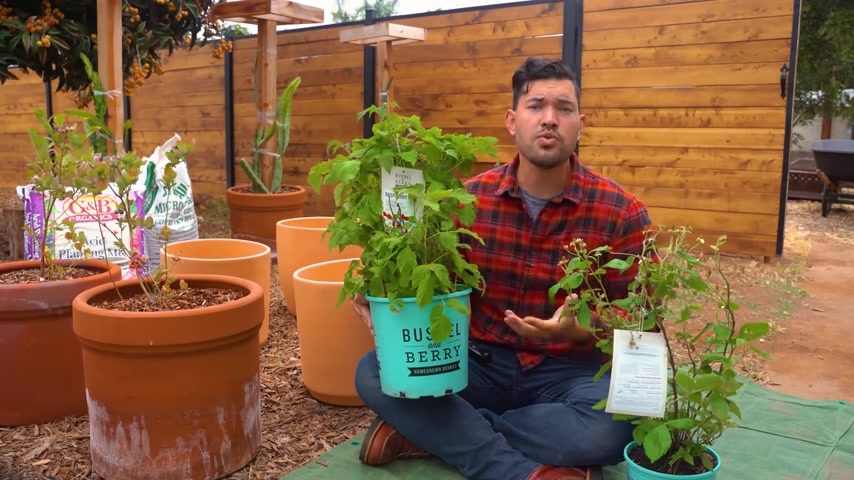
It's in the ground , for example , and it will grow with underground .
Those roots actually can send a rhizome out .
And that's how they sort of spread all over the place because that rhizome will go underground and then it will pop up and throw out some canes .
And the canes really are the interesting thing about these plants .
So the first canes to emerge are called primo canes .
They're green , they're tender , they're young and sometimes they're going to produce the fruit .
Then as they mature that next year , they get a little browner , they get a little more dense and woody and then they become flora canes or second year canes .
And a lot of the times you're going to get a raspberry blackberry that produces off of the fluro canes .
So it'll have a fluro cane come up and you'll get these fruiting lateral stems that come out and that's where all the fruit comes from .
So the first important thing to know when you're growing raspberries and blackberries is , which variety do you have ?
Does it produce off the Primo canes or does it produce off the fluro canes in the world of raspberries ?
You have two main growth habits or growth styles .
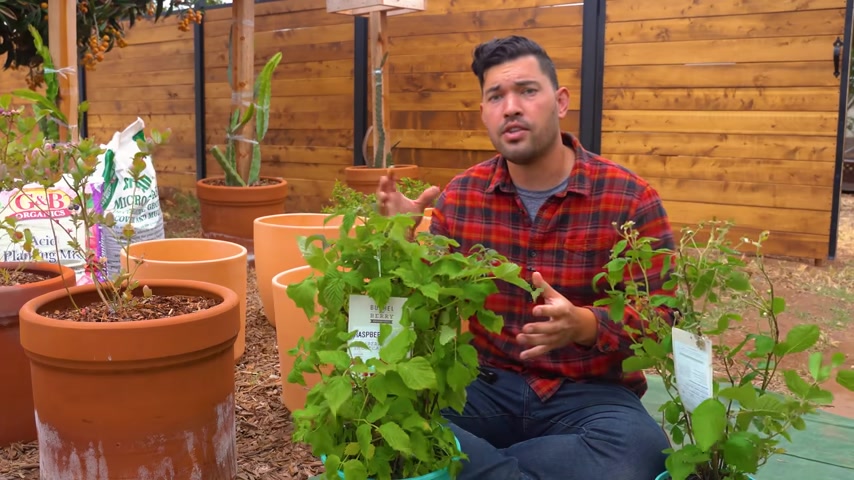
You have your summer bearing ones , which it's kind of like a June bearing strawberry in the sense that that's pretty much when you're getting your fruit , June and July and it's going to bear off of over wintered canes , which we now know are the floro canes next .
You have your ever bearing and those are going to produce off of the primo canes that come up in the summer .
So you're going to get one flush .
The biggest flush , late summer , early fall off those primo canes .
They'll over winter , they're still really a primo can because they're still very young and it hasn't been over a year yet and then they'll produce on the lower part of those primo canes the next summer .
Let's mix up some soil for our container , raspberries .
What I have in front of me here is just your standard potting mix , whatever you can find locally , probably a little bit on that higher end .
It's going to have more organic matter because they're a heavy feeding crop .
The other thing I'm going to add one I think is a pretty good idea .
The other one is definitely optional , especially at the start is an acid lover mix .
So blueberries really like acidic soil , really acidic soil , raspberries , blackberries .
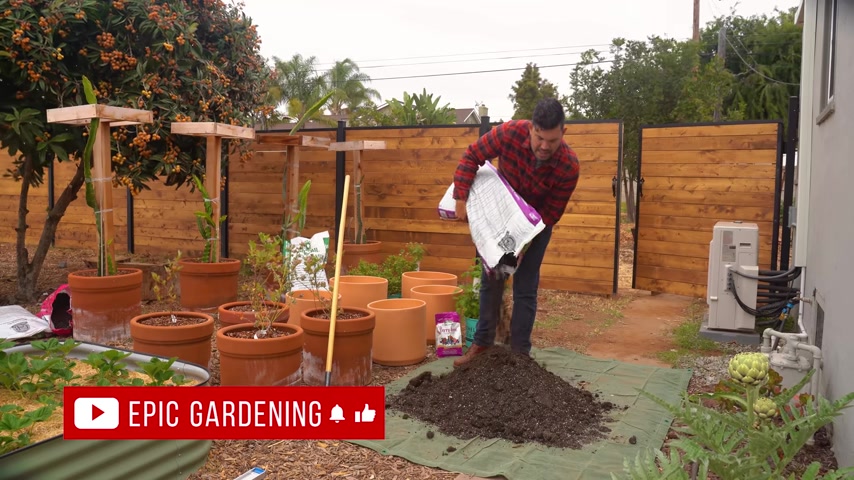
They want it to be a little bit more acidic than your average vegetable crop .
And so I'm going to add about 10% of this mix in to try to lower that ph just slightly .
So maybe about that much or so I wouldn't say this is mandatory , but I do think it's probably going to be a good idea .
The other thing I'm going to add just will fertilize it lightly .
Remember this is optional at the start .
Your organic potting mix is going to have some fertility in it .
But I'm adding a sp berry tone because it's specifically formulated for berries .
And I'd rather just do it now and well incorporate it into the soil before I put it in there .
So I'm not very precious about the amounts here .
I just kind of lay some down and I'll mix it in on this tarp and we'll get it going .
I'm going to take this raspberry raspberry short cake from bushel berry .
I'm going to put it in this back one right here while I shovel , let's talk a little bit about the general care that your raspberry is going to want .
You're going to want to give it full sun .
If you can , it can tolerate some shade .
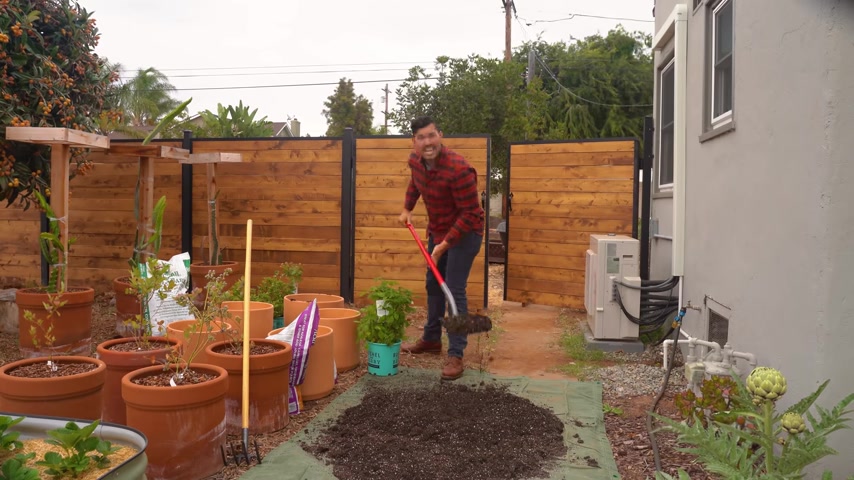
It would just rather not decent amount of air flow .
And the real killer here is super high heat .
It's just not going to like it's just not what it's used to growing in .
So you want to avoid that .
And then the other thing that's really going to hamper your success with raspberries is if you have it a little too wet in the pot .
So , you know , in my native soil here in San Diego , it's very heavy in clay , not really ideal to grow raspberries , which makes these containers really nice .
And we go with our raspberry .
Nothing too fancy here .
You just want to match the soil surface of the pot to the soil surface of the pot that you're putting it into ?
Oh , I've got some little pincher bugs in here .
I'm actually going to brush them off because I have a big problem with those in my climate and I don't want to introduce any into the pot if I can avoid it .
But nice looking root system here .
We're just going to break it up slightly .
Not get too wild with it .
Just give it a nice little rustle .
What this does is , it just helps the roots reset their growth .
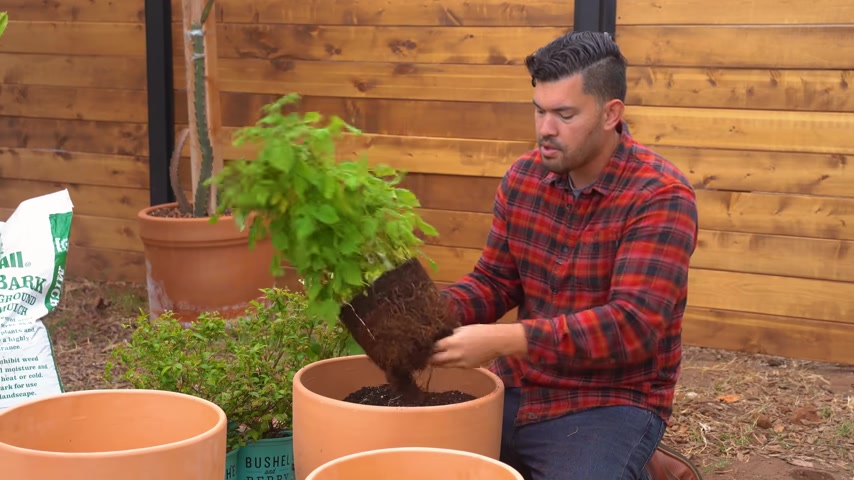
So if they're used to kind of spiraling around a little bit , you're going to help reset that a little bit and you can be a little more rough than you think you could .
A lot of us are very sensitive .
You know , we might prune our tops of our plants like crazy .
And then we think that we can't even dare touch the roots and you certainly can with most plants .
So I wouldn't worry about that too much .
I just want to make sure that I'm not getting any roots circling at all once .
I put it in here .
So in , we go , we're going to match the pot surface and then I've got a little bit of room to backfill .
The last thing I'm going to do for container prep on this raspberry before we get a nice water in .
I'm going to mulch the top .
I like to use straw mulch for a lot of my annual vegetables , but for something like this raspberry .
I actually really prefer some kind of woody material .
So I'm using micro bark here .
It's just a ground up bark that comes in maybe like a , I don't know , like a fruity pebble sized chunk .
It looks really nice .
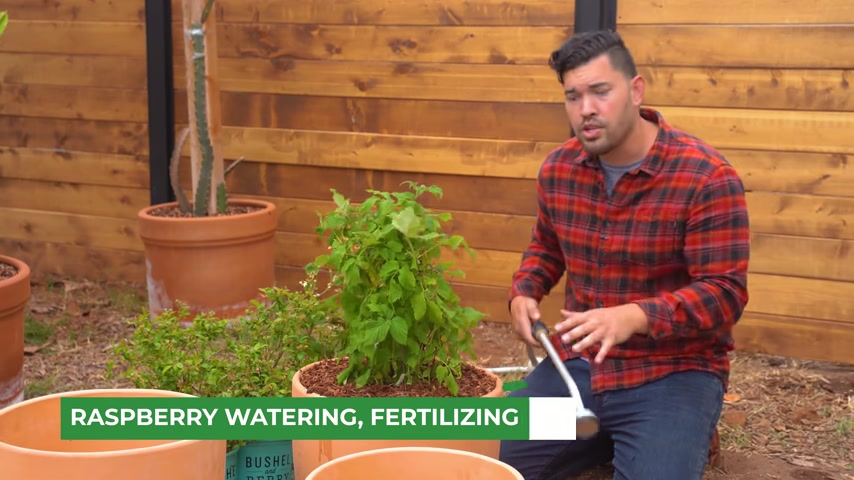
And also that's the natural mulch that a raspberry in the wild would have covering it as some sort of woody material that's fallen down and started to rot away .
So it's going to be a really nice mulch cover no more than about an inch or so , the only thing again you want to watch out for is if it starts holding on too much moisture , which is why we're going to talk about watering right now .
If you're going to run into an issue that has to do with your care for a container , raspberry , it's probably going to be over watering or the soil holding on it too much .
Sure , because the roots really don't like to sit in water .
So I'm going to come through , I'm going to give it one initial water .
But I would say as a general rule of thumb , it's better to water this deeply and less often rather than hitting it every single day and keeping that soil perfectly moist all the time .
Raspberry just seems to not like that as much and it can cause root rot .
It can cause all sorts of fungal diseases , not a great idea .
Besides that , you're not going to run into too many issues caring for a container of raspberry .
You'll have your standard issues with pests for fruit .
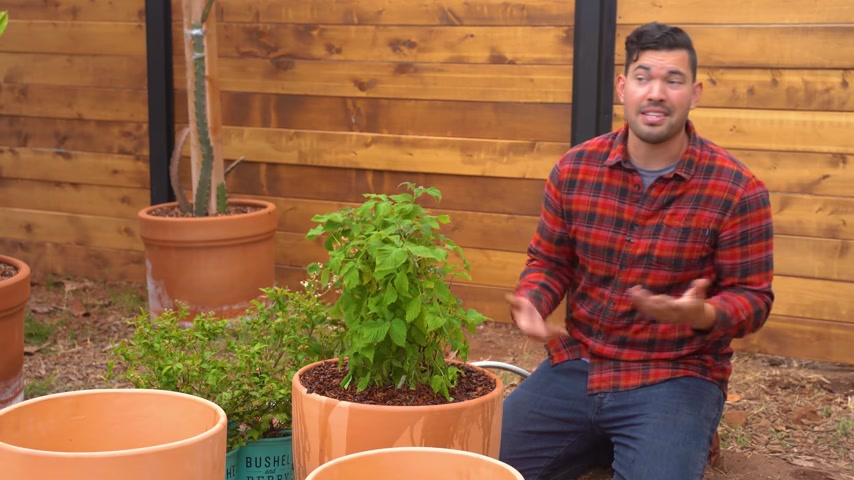
The best way to prevent from dealing with pests like birds , leaf miners , fruit flies .
That kind of thing is to come through and actually pick the fruit when it's ripe .
Don't delay because then the pests are going to start coming and say , hey , if you're not taking it , I'll definitely take it and I'll have a little snack besides that .
Really not a whole lot of issues .
It's a heavy feeding plant .
So you can come in with a liquid or granular organic fertilizer pretty regularly and give it that and it will really , really appreciate that .
But besides that , we don't have too much more to say .
So let's move on to blackberries .
Well , Barry corner is filling in here and we're on to blackberries next .
They kind of look the same as raspberries , don't they ?
They kind of grow very similarly .
However , there are some key differences in their care .
So right here , I've got a great container variety .
You really do have to get a variety specific to containers if you want to grow it in containers .
Otherwise the growth habit can just be insane .
This is baby cakes aptly named from bush and berry .
Really nice one .
But what you have to remember about blackberries is that unlike raspberries , they do want soil that's a little bit more consistently moist , especially as they're going through the fruiting season .
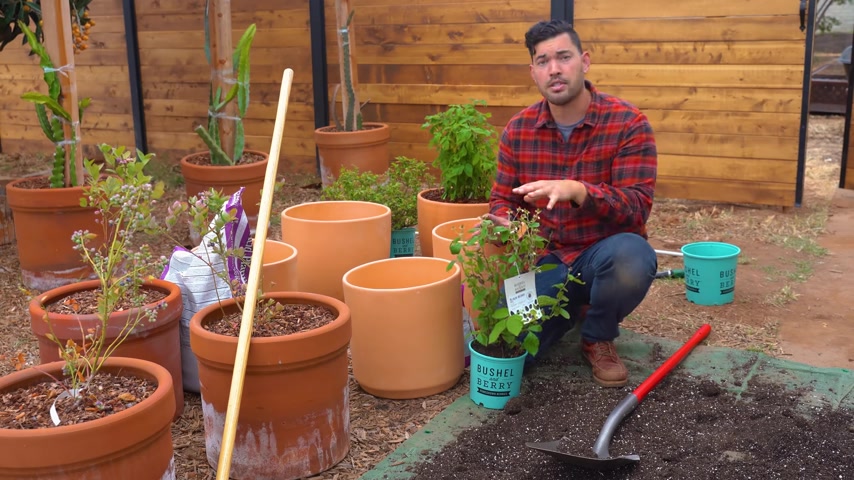
So you want to keep that more well watered , maybe more on an even schedule than you would .
Your raspberries , they're going to appreciate that .
The other thing is depending on the cultivar or variety you choose , they can thrive in extreme heat , they can thrive in quite cold temperatures .
So no matter where you are , you can grow blackberries successfully soil wise .
It's pretty much the same thing .
So let's talk about the different growth habits of blackberries while I shovel it to the pot .
The cool thing about blackberry growth habits is that you're going to have one that suits pretty much any growing condition that you want .
You have your erect style blackberries .
Those as the name implies , the canes stand up and they're relatively sturdy and they can pretty much support their own weight .
So something like your traditional blackberry is going to be an erect cultivar .
Otherwise you have a trailing cultivar which really the canes are a little bit less to support themselves .
They are a little flimsier and you probably are going to want some kind of blackberry trellis .
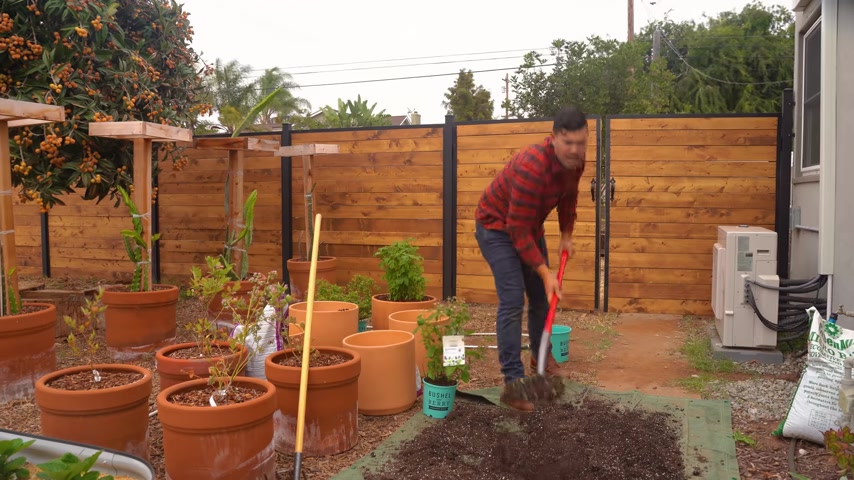
Now , of course , we're talking about some of the more traditional varieties that aren't grown in containers here .
Nevertheless , I still think it's kind of important .
So things like your boys and berry or your Mary and berry , those are going to be your trailing varieties and then those original O G blackberries , those are more of the erect varieties .
So in another video , I'll actually do how to build a trellis for blackberries because I do want to put some in ground here at the homestead and it's going to be really cool to have a nice tidy blackberry trellis .
But let's pop this one up right now .
The important thing to remember with whatever type of blackberry that you grow , they are all flora cane style blackberries .
So they're going to fruit off the second year of the cane .
So that's something very important because if you prune off the primo canes , then you won't actually ever get blackberries because you've killed it before it can actually produce the flu cane , which is going to produce the blackberry .
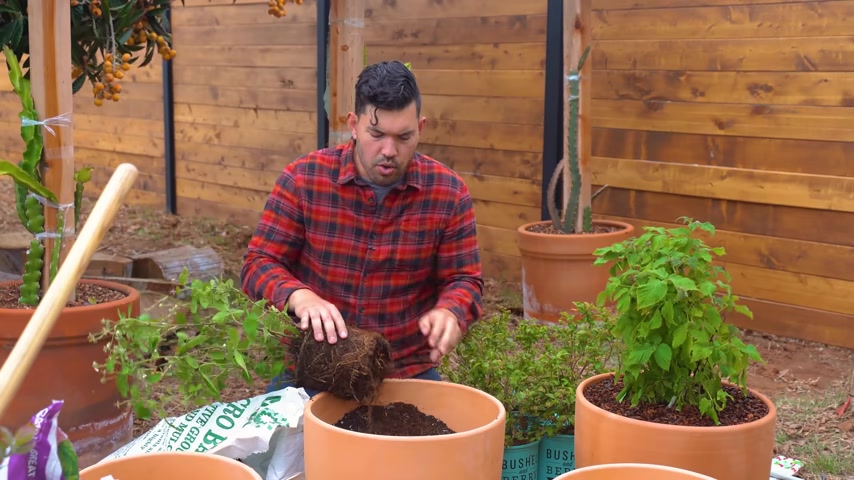
So again , just making sure that I don't get this root bound before it even starts being a little rough , being a little bit , you know , abrasive to these roots , but it is way better than putting it in and having spiraling roots from the start .
The other thing to think about with blackberries is , you know , really choose varieties whether it's in a container or not , that will be well suited to your zone .
So you want to look up the chill hours , which we'll talk about a little bit more in the blueberries because I find it's a lot more important when you're growing the blueberries .
But you do want to select a cultivar that will work really well in your zone .
Of course , these varieties are specifically suited to do well in containers and pretty tolerant to many different growing zones .
So they'll do fine .
But if you do want to put them in the ground , then I do think that is a highly , highly advisable idea .
See , I mean , look at just how much I got out of this route really didn't damage it much at all .
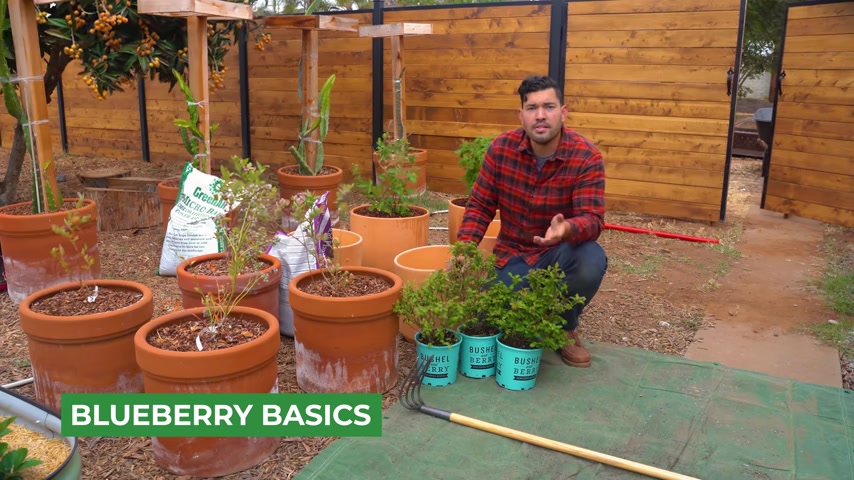
But I just loosened it up and I got it ready to be in its forever home here in the pot , top it off with a little mulch and we will move on to one that has given many gardeners problems and that would be growing blueberries in containers effectively .
Next up , we have probably the most popular berry to grow in a container and that would be blueberries , although maybe strawberries is even more popular .
But nevertheless , I actually thought I couldn't grow blueberries both in my climate and the amount of space I had for a few different reasons .
Number one didn't have the space thought I couldn't put it in the ground .
But number two , blueberries really like an acidic soil .
I'm talking a 4.5 to 5 ph soil .
I don't have that in my climate and I also don't really have the type of soil in general that blueberries like so thought .
Ok , well , containers are my only reason .
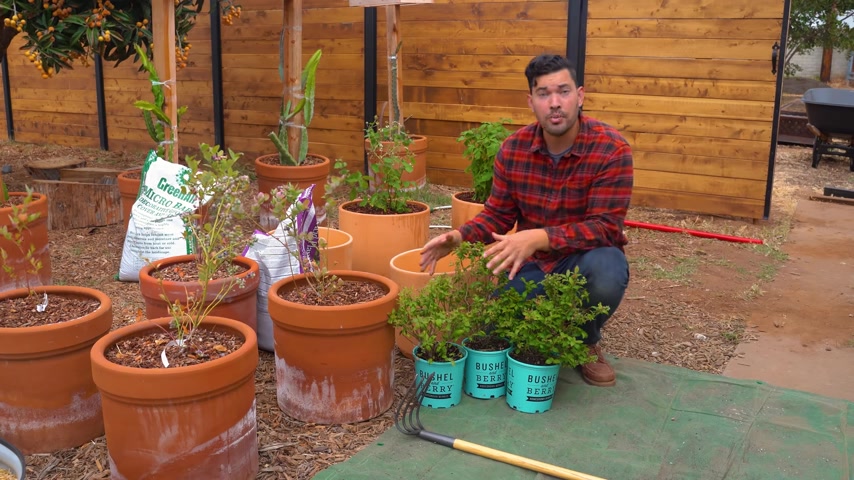
The third thing I'll say is you want something that has the chill hour requirement that matches to your growing zone for those of you who don't know chill hours are just the amount of hours under a certain temperature that a particular plant needs to accumulate to produce a reliable harvest .
So these ones right here , this is blueberry jelly bean from bushland berry .
They have 1000 chill requirement .
So they need 1000 or more in my zone .
I like to grow ones that are 23 , 400 chill hours because I'm in zone 10 B I don't get a lot of chill hours .
So these ones are going to be really good for a growing zone .
That's a little bit lower .
The 45678 growing zone is a fantastic recommendation .
But now we have to talk about the soil mix that I've personally had a lot of success in and it is a has to mix .
So we know blueberries like a really acidic mix .
So how do we actually do that effectively ?
Well , like the raspberries , we are going to use acid lover mix , but we use way more of it .
So the ratio here is going to be 60% of an acid loving mix .
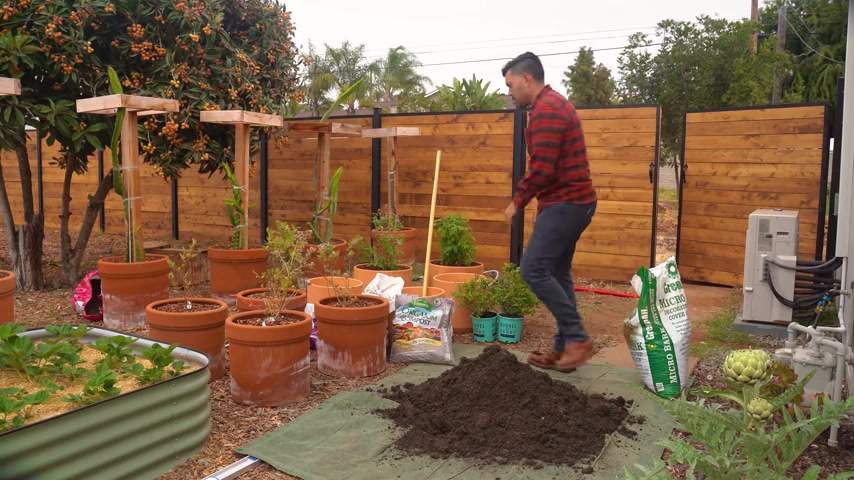
Sometimes it's sold as a chameleon and Azalia mix 60% .
So I'm going to do two bags here , then you need to have some kind of organic matter .
So I'm going to go with pure compost from a couple of different sources .
We've got some more organic mushroom compost here .
That will be a great addition .
And then we're also going to add some other compost that I just have laying around another fantastic addition here .
But the final ingredient is actually going to be that micro bark mulch we used on top of our raspberries and blackberries .
We're going to mix it in to our soil here at roughly about 10% .
So 60% acid lover , 30% compost and then a little dollop of that micro bark mulch at about 10% .
And you know what I'm going to add be to at the same time , why not , why not add a little extra fertility in at the start here ?
It might seem weird to mix in the micro bark .
I've had fantastic results with it personally .
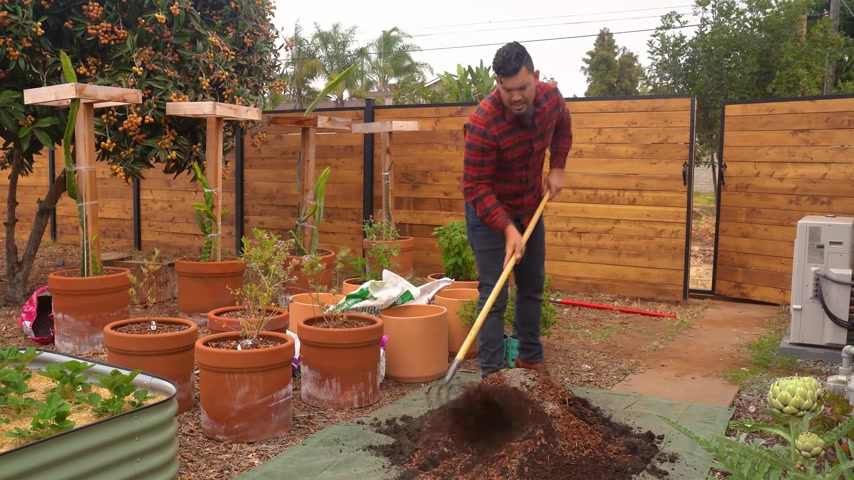
I know everyone has their own sort of favorite mix for certain types of crops .
I've had a lot of success and if you think about how blueberries grow in the wild , it does make a lot of sense .
I was in Maine a couple years ago foraging wild blueberries up at Acadia National Park .
I was in Alaska and that same year foraging off the side of the road , blueberries and pretty much they're growing on a lot of dead decaying forest type material .
So , if they do really well in that situation , it probably makes sense to mimic it in our gardens .
Why not just copy Mother Nature , right ?
So this is the mix that I've had a ton of success with .
Let's get our jelly bean blobs all potted up and we'll talk a little bit about care .
I do have a couple of articles and videos about blueberry care already .
But the biggest problem people run into I think is a pest problem actually .
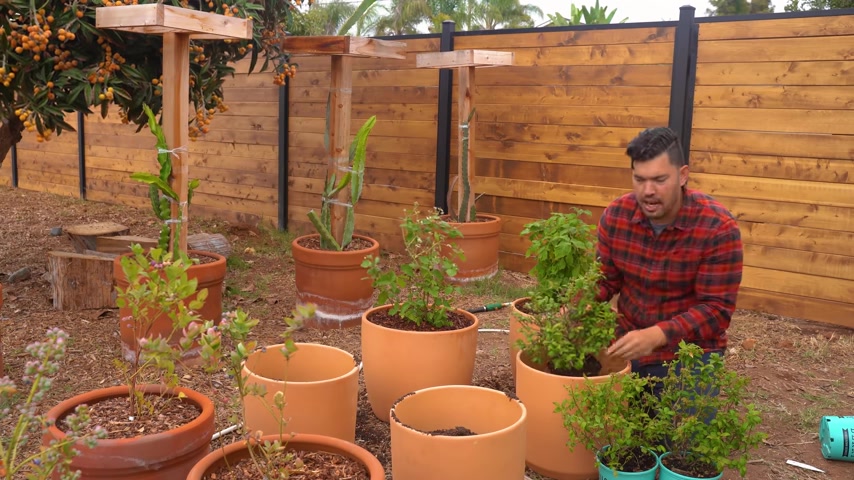
So when the blueberries start to ripen up , trust me , you're not going to be the only one that notices you're going to have probably birds as your number one pest .
Now , I fortunately haven't run into that yet here at the Epic Homestead , but I know it's just a matter of time because I've been slowly establishing my property here .
Maybe a lot of the native wildlife hasn't quite noticed that I've been getting my game on here .
What you're going to want to do for birds unfortunately is net your blueberries .
It's one of the only ways to reliably prevent birds from getting in .
And the reason is simple , you can't do much else .
I mean , you could use these flashing type of products .
They don't work that well , you just need to physically prevent a bird from getting on .
But the mistake a lot of people will make when they're getting bird pressure on their blueberries is they'll just put netting and they'll kind of drape it right over .
The blueberry .
Birds are smarter than that .
My friends , they are going to come in .
Oh , I got a lot of earwigs on this .
We'll get that out of there .
Don't want them in my new pot .
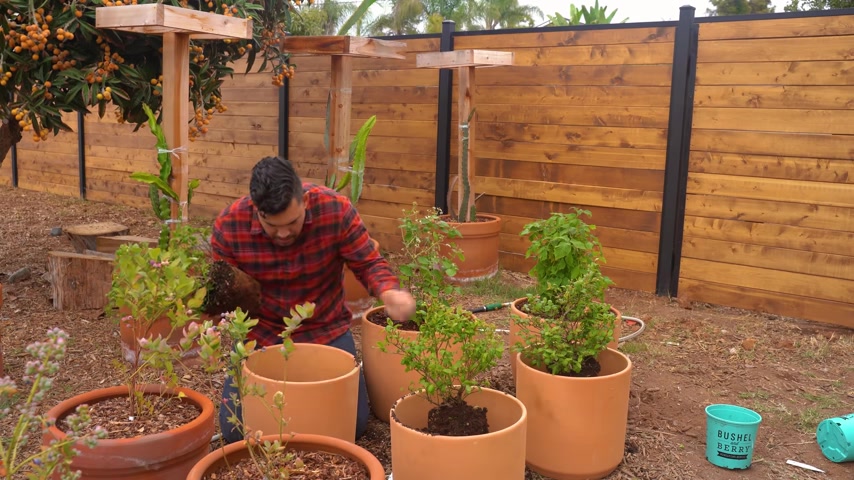
Let's get that guy out too .
I'm sorry , guys , you are not allowed in my blueberry pot .
At least not that many of you .
All right .
With the netting , you have to make sure that you build sort of a frame around it and keep it off the blueberry .
Otherwise the birds will just land on the netting and eat right through .
So if I was going to net this whole thing off , I might put some steaks in the ground and drape netting over the whole thing about 12 inches off set .
And that would be a great way to prevent not only the blueberries , but also the blackberries .
Maybe even the strawberries over here off the screen , just like our raspberries and blackberries , we're going to finish it off with a nice top dressing in this micro bark .
It really looks nice .
Besides the fact that it provides the blueberry with exactly what it needs to protect that soil that we just customized for our B blues with watering sunlight , all that kind of stuff really .
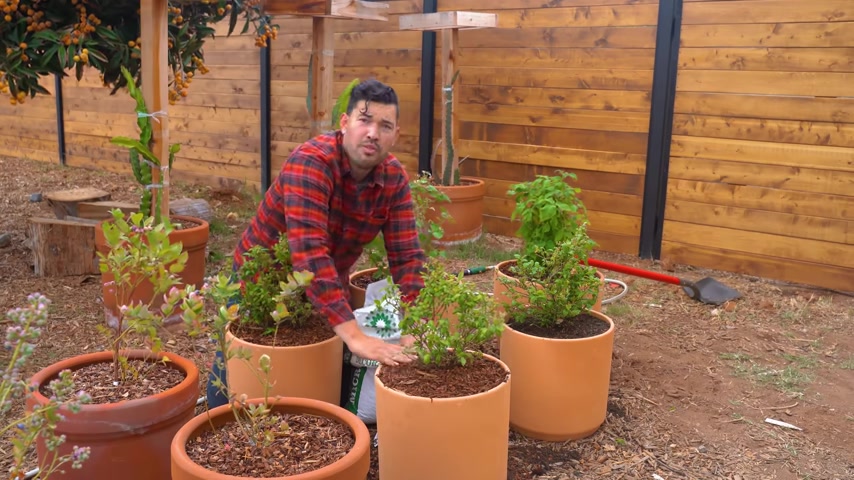
They're simple in a container like this provided you get a good variety because there are massive massive blueberries .
You have these high bush blueberry varieties , all these different types which we do go into in a completely different type of gardening video .
But you're going to want to give it maybe one or two inches of water per week .
You can just move the mulch aside , give it a quick test .
Of course , the type of container you put it in will start to change that a little bit .
That's why you can never answer the question .
How often to water a certain plant ?
And you can only give basic recommendations because you know , where did you put the plant ?
What kind of pot are you using ?
If you're using a plastic pot , you're going to have to water away less than a Terracotta pot , for example , right ?
How big is the pie ?
The bigger the pot , the less often you're going to have to water because there's more soil in there , retaining more moisture relative to the size of the plant .
And so that's why these sorts of questions .
It's not really what I like to do here on Epic Gardening .
I like to teach you how to become a gardener , how to think like a gardener .
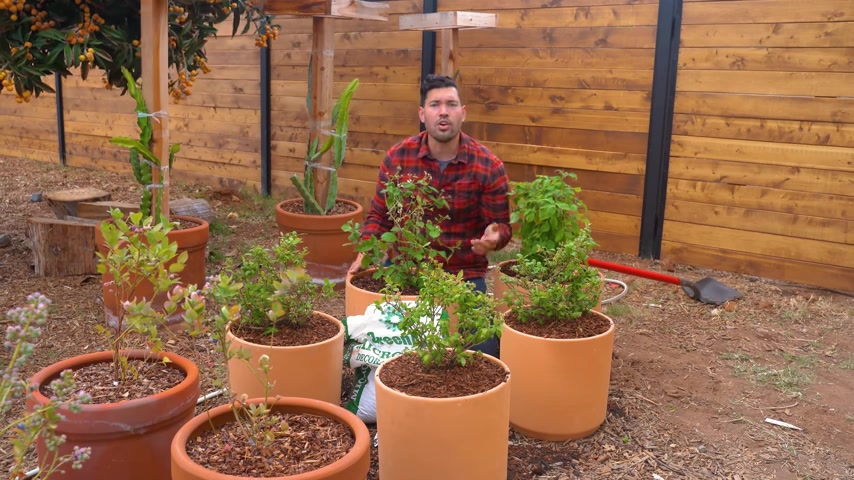
Instead of just sort of being like this Google search engine on youtube for your answers .
You have to learn the skills to actually think like a gardener , learn how the plant grows with blueberries .
These are going to do really , really well , not a lot of pruning required on these , especially for the container varieties .
So let's water them in and we'll wrap it up .
I threw a fresh coat of mulch on the ground as well just to tidy up this space .
I think it's looking really nice .
This is the Barry corner of the Epic Homestead .
Got the dragon fruits behind me .
But two new berries into the mix , raspberry , blackberry , the baby cakes , blackberry , the raspberry shortcake , raspberry great container varieties .
And then the three blueberry jelly beans .
The thing I'll say is there is a lot to say about blueberries , blackberries , raspberries as far as pruning and choosing goes but not in containers .
And that's the whole point of these particular cultivars from bush and berries .
You don't really have to worry about a lot of that .
I actually see a ripe blueberry right here .
I'm going to enjoy that .
It's so good .
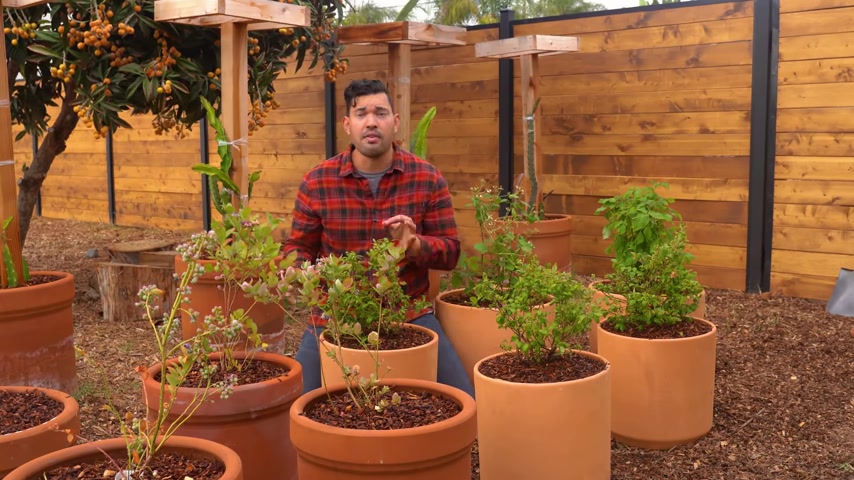
It's so good .
And berries are some of the best things that you can actually eat in the world of fruit .
I'm certainly not a health expert , but they are my favorite thing to eat full of antioxidants and beautiful and easy to grow .
So hopefully this was a good primer on growing blueberry , blackberries , raspberries in containers .
If you have any questions , drop them in the comments .
Huge .
Thanks to Bush and Berry for sponsoring the video .
Their varieties are amazing for container growers .
So if you really want to get into it , I highly recommend you check out their varieties and until next time , good luck in the garden and keep on growing .
Are you looking for a way to reach a wider audience and get more views on your videos?
Our innovative video to text transcribing service can help you do just that.
We provide accurate transcriptions of your videos along with visual content that will help you attract new viewers and keep them engaged. Plus, our data analytics and ad campaign tools can help you monetize your content and maximize your revenue.
Let's partner up and take your video content to the next level!
Contact us today to learn more.